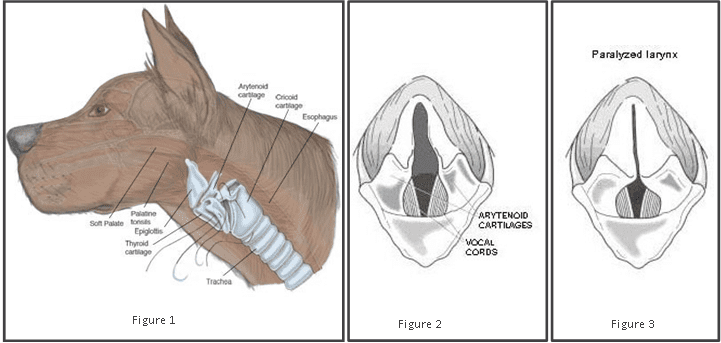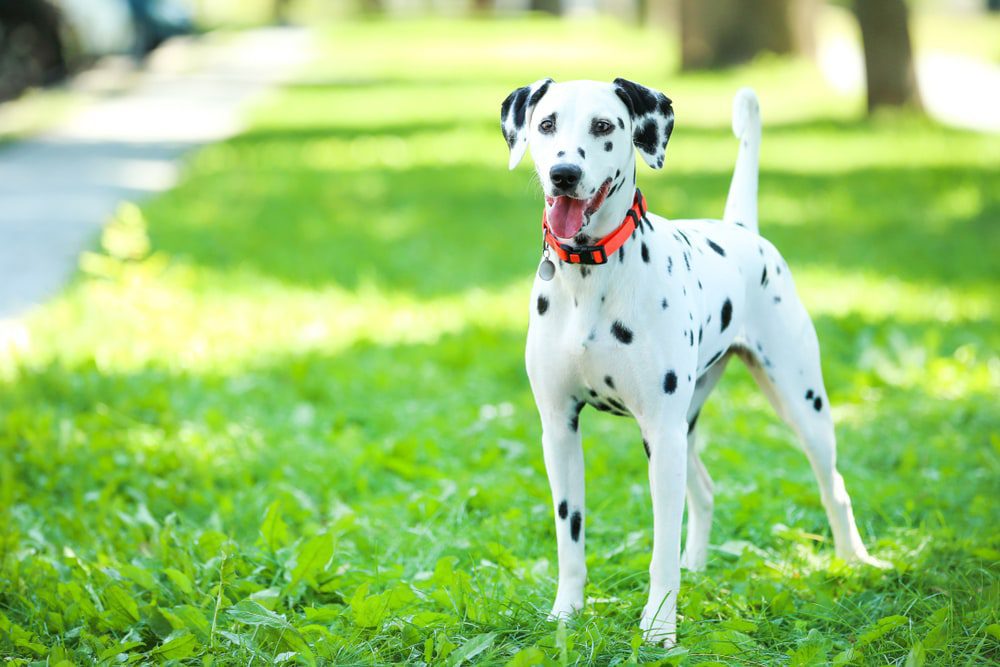
Paralysis of the larynx in dogs: symptoms, diagnosis and treatment
If your dog has been barking strangely lately, is coughing more, or is having trouble eating, see a specialist. Perhaps the veterinarian will diagnose her with paralysis of the larynx.
Contents
What is paralysis of the larynx in dogs
This is one of the easiest diseases to understand. In a dog, like in humans, the larynx, also called the vocal apparatus, must open and close so that it can breathe, eat, and drink. In some pets, the nerves that control the muscles responsible for opening and closing the larynx stop working with age. This not only affects the sound of barking, but also causes the larynx to be left unprotected while eating and drinking. It also weakens and sinks during breathing, which makes this process much more difficult.
Causes of paralysis of the larynx in a dog
A pet can be born with this disease, and then it is called congenital. If the disease develops during life, it is called acquired. Unfortunately, the cause of this disease often remains unexplained, especially when it is less obvious than a physical problem with the larynx, such as a tumor or injury.
In other acquired cases, the disease usually affects middle-aged and older dogs. However, some of them may develop neurological signs in other parts of the body, both before and after the onset of problems with the larynx. This suggests that the disease may be associated with complex problems of the nervous system. A risk factor for the development of paralysis of the larynx can be called myasthenia gravis and degenerative polyneuropathy.
According to the American College of Internal Veterinary Medicine, Labradors, Golden Retrievers, St. Bernards, Newfoundlands, Dalmatians, and English Setters are the most likely to suffer from paralysis of the larynx, although in general any dog can develop the disease. Overweight pets are also at a higher risk of developing it. The same can be said about dogs with diseases of the endocrine system, such as hypothyroidism or diabetes. Paralysis of the larynx is more likely to develop in dogs living in hot and humid environments.

Signs of paralysis of the larynx in dogs
Usually, the first signs owners notice are coughing and heavy breathing. The dog breathes noisily: it is on inhalation, and not on exhalation. Loud breathing can be aggravated by shortness of breath.
As the disease progresses, the pet begins to tire more quickly, the sound of barking changes and coughing or vomiting occurs while eating and drinking. Symptoms usually also progress. Over time, swallowing can become problematic. In rare cases, nerve degeneration can extend beyond the larynx and spread throughout the body, causing general neurological weakness. According to the Merck Veterinary Manual, sudden collapse can also be a sign of paralysis of the larynx.
Diagnosis of paralysis of the larynx in dogs
To diagnose the disease, the veterinarian will take an anamnesis by asking about the health of the dog. He will also likely do a physical exam and a neurological exam.
To confirm, a specialist may order a chest x-ray and basic blood tests. In general, this disease is usually quite easy to diagnose.
Treatment of paralysis of the larynx in dogs
In addition to the fact that the diagnosis of paralysis of the larynx is quite simple, treatment options are available that can be adapted to the needs of the pet. Dogs with mild symptoms are likely to be satisfied with lifestyle changes, such as avoiding strenuous physical activity and avoiding excessively hot environmental conditions. If your four-legged friend is overweight, it is very important to get rid of him. In addition, in many cases, medicines help to reduce inflammation and swelling of the larynx.
Dogs that have difficulty breathing or show multiple symptoms are often recommended for surgery. Despite the existence of various procedures, most specialists prefer posterior laryngeal surgery. It is usually performed by a certified veterinary surgeon.
The operation consists in bandaging or suturing the affected part of the larynx so that it is constantly in the open position. This allows you to compensate for the dysfunction of the nerves that are no longer able to open the larynx normally. In addition, the operation helps to eliminate upper airway obstruction and associated clinical signs when the larynx cannot open and close effectively. Since the larynx is permanently open after this operation, the risk of pneumonia increases.
In rare cases where surgery fails, a tracheotomy is performed to surgically open the trachea and insert a permanent tube to keep weakened structures open.
Forecast
The prognosis for paralysis of the larynx is very favorable. Surgery usually significantly improves the dog’s quality of life. The main complication that should not be forgotten is the likelihood of developing aspiration pneumonia. The risk of developing it can be reduced by following the recommendations of the veterinarian and knowing the symptoms to look out for.
For pets with neurological weakness that has spread beyond the larynx, the prognosis is more difficult to predict. They usually also have a significant improvement, but a favorable outcome is less predictable.
Prevention of paralysis of the larynx
Since the causes of paralysis of the larynx are not fully understood, veterinary science does not answer the question of how the development of this condition can be completely prevented. If a pet is taken from a breeder, it is necessary to ask him to screen for paralysis of the larynx, especially in relation to dogs of those breeds that are more likely to suffer from it. It is important to monitor your four-legged friend’s weight to prevent obesity, which is a risk factor for this disease.





